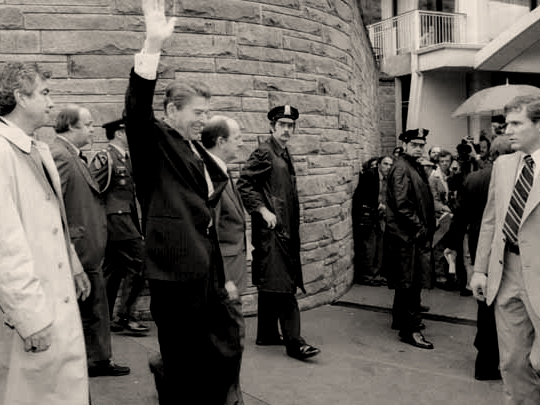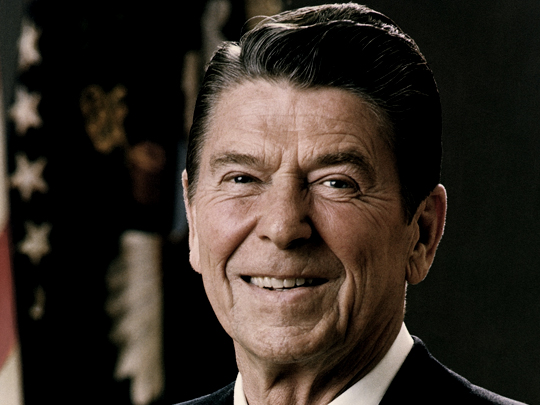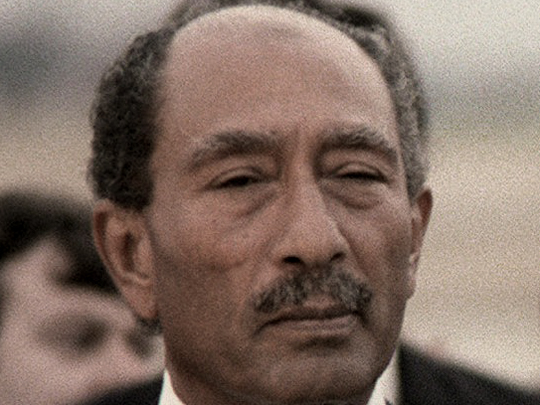Wikimedia Commons / CC-BY-SA-3.0 / GFDL
1 – Irish Republican Prisoners go on Hunger Strike – After 66 days, Bobby Sands MP Died
The 1981 Irish hunger strike was the culmination of a five-year protest during The Troubles by Irish republican prisoners in Northern Ireland.
The protests began in 197 when the British government withdrew Special Category Status for convicted paramilitary prisoners.
In 1978, after a number of attacks on prisoners leaving their cells to “slop out”, the dispute escalated into the dirty protest, where prisoners refused to leave their cells to wash and covered the walls of their cells with excrement.
In 1980, seven prisoners participated in the first hunger strike, which ended after 53 days.
The second hunger strike began on 4 February 1981 and was a showdown between the prisoners and the Prime Minister, Margaret Thatcher.
One hunger striker, Bobby Sands, was elected as a Member of Parliament during the strike, prompting media interest from around the world.
The strike was called off on October 3, after ten prisoners had starved themselves to death, including Sands, whose funeral was attended by 100,000 people.
The strike radicalized Irish nationalist politics and was the driving force that enabled Sinn Féin to become a mainstream political party.
2 – Pope John Paul II is Shot and Critically Wounded by Mehmet Ali Agca

The attempted assassination of Pope John Paul II took place on 13 May 1981, in St. Peter’s Square at Vatican City.
The Pope was shot and wounded by a Turkish gunman, Mehmet Ali Ağca, while he was entering the square.
The Pope was struck four times and suffered severe blood loss.
Ağca was apprehended immediately and later sentenced to life in prison by an Italian court. The Pope later forgave Ağca for the assassination attempt.
He was pardoned by Italian president Carlo Azeglio Ciampi at the Pope’s request and was deported to Turkey in June 2000.
3 – British Police Arrest Peter Sutcliffe, the ‘Yorkshire Ripper’
Peter Sutcliffe is an English serial killer who was dubbed the ‘Yorkshire Ripper’ by the press. In 1981, Sutcliffe was convicted of murdering thirteen women and attempting to murder seven others.
Sutcliffe’s outbreak of violence seems to have occurred because he was swindled out of money by a prostitute and her pimp.
When interviewed by authorities, he claimed the voice of God had sent him on a mission to kill prostitutes.
Sutcliffe carried out his murder spree over five years, during which the public was especially shocked by the murders of women who were not prostitutes.
After his arrest for driving with false number plates in January 1981, the police questioned him about the killings and he confessed that he was the perpetrator.
At his trial, he pleaded not guilty to murder on grounds of diminished responsibility, due to a diagnosis of paranoid schizophrenia. This defense was rejected by a majority of the jury.
He is serving twenty concurrent sentences of life imprisonment. The High Court dismissed an appeal by Sutcliffe in 2010, confirming that he would serve a whole life tariff and never be released from custody.
4 – President Reagan is Shot & Wounded by John W Hinckley III

On March 30, 1981, while leaving a speaking engagement at the Washington Hilton Hotel in Washington, D.C., President Ronald Reagan and three others were shot and wounded by John Hinckley Jr.
Hinckley’s motivation for the attack was to impress actress Jodie Foster, who he had developed an obsession over after seeing her in the 1976 film Taxi Driver.
There were no fatalities in the attack. Reagan was shot in the chest, suffering a punctured lung and heavy internal bleeding, but quick medical attention allowed him to recover quickly.
The most seriously wounded victim was White House Press Secretary James Brady, who was paralyzed after a gunshot wound to the head.
When he died in 2014, a Virginia medical examiner found it was directly related to the shooting.
Hinckley was found not guilty by reason of insanity on charges of attempting to assassinate the President and remained confined to a psychiatric facility.
5 – US President Reagan Fires 11,500 Striking Air Traffic Controllers

On August 3, 1981, the Professional Air Traffic Controllers Organization declared a strike, seeking better working conditions, better pay, and a 32-hour workweek (a four-day week and an eight-hour day combined).
Ronald Reagan declared the PATCO strike a ‘peril to national safety’ and ordered them back to work under the terms of the Taft-Hartley Act. Only 1,300 of the nearly 13,000 controllers returned to work.
Reagan demanded those remaining on strike return to work within 48 hours, otherwise, their jobs would be forfeited.
At the same time, Transportation Secretary Drew Lewis organized for replacements and started contingency plans.
On August 5, following the PATCO workers’ refusal to return to work, Reagan fired the 11,345 striking air traffic controllers who had ignored the order and banned them from federal service for life.
The FAA initially claimed that staffing levels would be restored within two years. However, it took close to ten years before overall staffing levels returned to normal.
Some former striking controllers were allowed to reapply after 1986 and were rehired. The civil service ban on the remaining strike participants was lifted by President Bill Clinton in 1993
6 – El Mozote Massacre

The El Mozote Massacre took place in and around the village of El Mozote, El Salvador, on December 11, 1981.
Upon arrival, in the remote village, of around 20 houses, Salvadoran soldiers ordered everyone out of their houses and into the square.
They made people lie face down and questioned them about hiding opposition guerrillas. They then ordered the villagers to lock themselves in their houses overnight, warning that anyone coming out would be shot.
During the morning, they proceeded to interrogate, torture, and execute the men in several locations.
They then took the women and older girls, separating them from their children and killing them after raping them.
Girls as young as 10 were raped. Finally, they killed the children by slitting their throats, then hanging them from trees, with one as young as two years old. After killing everyone, the soldiers set fire to the buildings.
Estimates vary, but it is estimated the Salvadoran Army killed up to 1,000 civilians in the massacre. In December 2011, the El Salvador government apologized for the massacre.
7 – Egyptian President Anwar el-Sadat is Assassinated by Islamic Extremists

The assassination of Anwar Sadat occurred on October 6, 1981.
The assassination was undertaken by members of the Egyptian Islamic Jihad
Sadat, the President of Egypt, was assassinated during the annual victory parade held in Cairo to celebrate 1973’s Operation Badr.
This Operation had seen the Egyptian Army cross the Suez Canal and take back a small part of the Sinai Peninsula from Israel at the beginning of the Yom Kippur War.
A fatwā approving the assassination had been obtained from Omar Abdel-Rahman, a cleric who was later convicted in the US for his role in the 1993 World Trade Center bombing.
